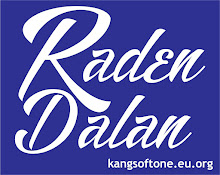Introduction
Collective behavior is a fascinating phenomenon that emerges when individuals come together to form a collective entity with shared goals, emotions, or actions. This article delves into the intricacies of collective behavior, examining how groups, crowds, and communities shape and influence human interactions on a larger scale.
1. The Power of Unity
At the heart of collective behavior lies the power of unity. Explore how individuals, driven by a common purpose or shared identity, unite to form groups. Whether in protests, celebrations, or social movements, the collective energy of a unified group often yields transformative results.
2. Understanding Crowd Psychology
Crowds exhibit a unique psychology that transcends individual behavior. This section explores the dynamics of crowd behavior, examining factors such as anonymity, contagion, and emergent norms. Uncover the motivations behind collective actions in both positive and challenging scenarios.
3. Social Movements
Catalysts for Change: Social movements are powerful expressions of collective behavior aimed at bringing about social, political, or cultural change. Analyze the dynamics of social movements, understanding how they mobilize individuals, create momentum, and influence societal structures.
4. Trends in Online Communities
In the digital era, collective behavior extends to online platforms and communities. Investigate how social media, forums, and virtual spaces shape collective consciousness, allowing individuals to connect, share ideas, and mobilize for various causes. Examine the positive and negative aspects of these behavior in the online realm.
5. Emergent Norms and Deviant Behavior
These behavior often gives rise to emergent norms that guide group actions. Explore how these norms influence both conformist and deviant behavior within a collective. Understand the psychological mechanisms that lead individuals to adopt new norms in group settings.
6. Challenges and Risks
While collective behavior can be a force for positive change, it also presents challenges and risks. This section addresses the potential downsides, including the amplification of negative behaviors, diffusion of responsibility, and the impact of groupthink on decision-making.
Conclusion
Collective behavior is a multifaceted phenomenon that shapes societies, movements, and interactions. By unraveling the dynamics of groups, crowds, and communities, we gain valuable insights into the mechanisms that drive collective actions. Understanding these behavior allows us to navigate the complexities of group dynamics, fostering positive outcomes and mitigating potential risks in our interconnected world.
 KangSoftone Berita Informasi Terlengkap & Terbaru
KangSoftone Berita Informasi Terlengkap & Terbaru